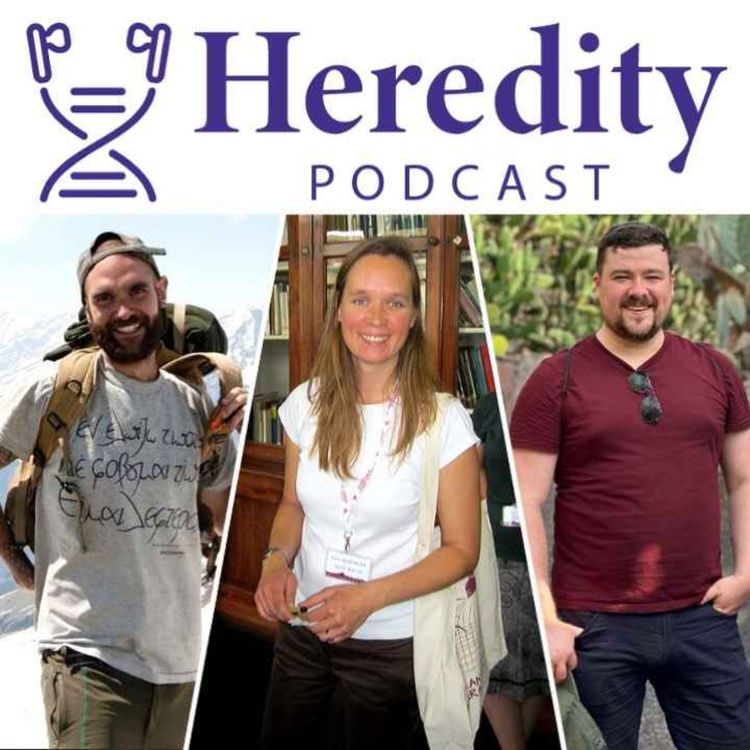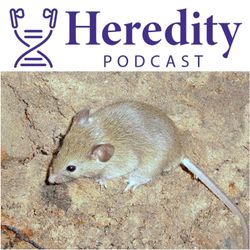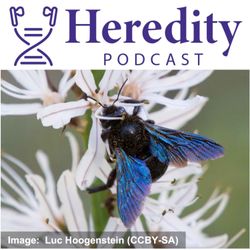Share

Heredity Podcast
Hello, hello and goodbye
•
After five years with the journal, James Burgon is leaving the Heredity Podcast. But fear not! Because the podcast is being left in a pair of safe and familiar hands. In this episode we meet our new host: Michael Pointer. Also joining the episode is new Editor-in-Chief Prof. Sara Goodacre.
More episodes
View all episodes

From dish to big data, neuronal regeneration in mice
25:31|Genomics is about patterns, but finding them, or even knowing what to look for, is difficult. In this episode we talk to Noah Simon about the clever approaches he took to investigating the genomics of neuronal regeneration in mice.
The violet carpenter bee & the European Reference Genome Atlas
25:57|DNA sequence data promises to enable the study of biodiversity and its response to threats. However, much of this potential depends upon the availability of reference genomes. We hear about the European Reference Genome Atlas (ERGA) from its Chairperson, Rob Waterhouse (Swiss Institute of Bioinformatics). We also hear from ERGA member Will Nash (Earlham Institute) about his quest to understand the genome of the beautiful Violet carpenter bee.
What do editors do?
15:17|Even non-academics hear a lot these days about the peer review process, but how does this work behind the scenes? In this episode we meet another new associate editor, Sebastian Ramos Onsins. We also find out what editors do at the journal from Co-editor-in-chief Sara Goodacre and editorial assistant Sandra Huettenbuegel.
Genetic simulations with SLiM
21:52|The use of genetic simulations is gaining popularity. In this episode we learn about SLiM (https://messerlab.org/slim/), one of the most popular software packages, from one of its creators - Ben Haller.
New associate editor: Diala Abu Awad
12:57|Down in the engine room of a scientific journal are its associate editors, they arbitrate the peer-review process and make the whole system run. Heredity's newest editor is Diala Abu Awad, in this episode we find out a bit about her and her work.
Avoiding inbreeding in Iberian Wolves
29:31|Living near humans and human infrastructure has ecological effects on many species. Iberian wolf populations in human-dominated landscapes are unable to disperse as far as they would in the past. We find out how they are coping with this change, from Dr Carolina Pacheco, Dr Raquel Godinho and Dr Francisco Álvares.
Mosquito population structure and gene-drives
23:37|Gene-drives hold great potential for the control of biological pests, but first they need to be thoroughly tested under appropriate conditions. In this episode we discuss some new work assessing whether mosquito populations in Northern Australia could be used to test a gene-drive targeting malaria mosquitoes.
Alternative splicing and thermal adaptation in mice
20:36|Genes are recipes for proteins and proteins do stuff. But if a gene can make more than one protein, how does that affect genetic variation and the possible routes to adaptation? We get an introduction to the topic of adaptive alternative splicing from David Manahan.
Harnessing genomics and AI for conservation
21:52|We're in the age of big data, but there remain several hurdles to integrating genomics into conservation science. We hear about these issues from Prof Cock Van Oosterhout, and discuss the potential solutions he outlined in his recent perspectives article for Heredity.